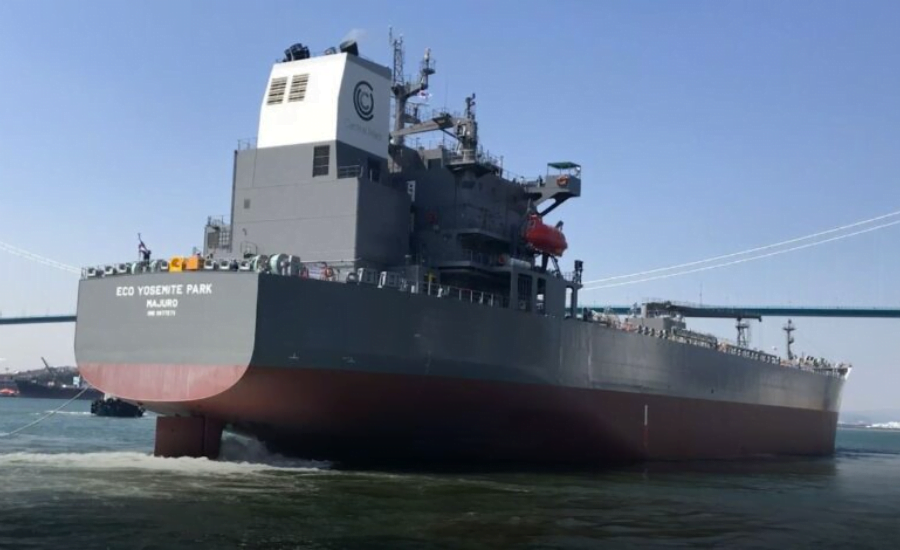
Ocean water is pushing miles beneath Antarctica’s terminal glacier, making it more susceptible to melting than previously thought. This is according to a new study that used radar data from space to take X-ray images of important glaciers.
When salty, relatively warm ocean water collides with ice, it causes “severe melting” beneath the glaciers. Underestimating global sea level rise, according to a study published Monday in the Proceedings of the National Academy of Sciences. There is a possibility that it will be evaluated.
Thwaites Glacier in West Antarctica
Dubbed the “Doomsday Glacier” because its collapse could cause catastrophic sea level rise. Is the world’s widest glacier, roughly the size of Florida. It is also the most fragile and unstable glacier in Antarctica. The main reason for this is that the land is sloped, allowing Ocean water to erode the ice.
Thwaites Island already contributes to 4% of global sea level rise. And has enough ice to raise sea levels by more than 2 feet. However, because the dam also acts as a natural dam protecting the surrounding ice in West Antarctica. Scientists believe that a complete collapse of the dam would ultimately cause sea levels to rise by about 3 meters. Making the world’s coasts much safer. It is estimated that this could be a catastrophe for the local community.
Numerous studies point to major weaknesses in Thwaites. A 2022 study says the country is “on the edge” of global warming caused by humans burning fossil fuels.
Latest Research
This latest research adds an alarming new element to the predictions regarding his fate. A team of glaciologists led by scientists from the University of California, Irvine. Used high-resolution satellite radar data collected from March to June last year to create X-ray images of glaciers. This allowed them to map changes in Thwaites’ “grounding line,”. The point where glaciers rise from the ocean floor and become floating ice shelves. Grounding wires are essential to ice sheet stability and Thwaites’ main weakness, but they have been difficult to study.
“Previously, we only had sporadic data to study this,” says Eric Rigno. Professor of Earth system science at the University of California, Irvine, and co-author of the study. “With this new data set, collected every day over several months, they can really see what’s going on. They can see how seawater pushes under the glacier for miles and then flows out again. I observed the rhythm of the tides every day. Linho told CNN that it would be enough for the surface of the glacier to rise by centimeters as the water surges.
Grounding Zone
He suggested that the term “grounding zone” might be more appropriate than the term grounding line because research shows that it can travel nearly four miles in a 12-hour tidal cycle did. The speed of seawater moving significant distances in a short period of time increases glacier melting, as fresh water is washed away and replaced by warmer seawater as the ice melts, Rigno said.”This process of widespread and massive seawater intrusion will reinforce sea level rise predictions from Antarctica,” he added.Ted Scambos, a glaciologist at the University of Colorado Boulder who was not involved in the study, called the study “fascinating and important.” “This discovery reveals a process that has not previously been considered in models,” he told CNN. And while these results only apply to certain areas of the glacier, “this could accelerate the pace of ice loss in our projections,” he said.
Marine Geologist
James Smith, a marine geologist at the British Antarctic Survey who was not involved in the study, said: “One of the uncertainties that needs to be addressed is whether the inflow of seawater beneath Thwaites is a new phenomenon. “Or is it a significant but long-unknown phenomenon?” “In any case, this is clearly an important process that needs to be incorporated into ice sheet models,” he told CNN.
Noel Gourmeren, Professor of Earth Observation at the University of Edinburgh, said the use of radar data in this study was interesting. “Ironically, we can learn a lot more about this environment by going into space and harnessing the growing power of satellites,” he told CNN.
There are still many unknowns about what the study results mean for Thwaites’ future, said Grumeren, who was not involved in the study. He told CNN it’s also unclear how widespread this process is in Antarctica, saying, “It’s very likely something similar is happening elsewhere, but Antarctica is an isolated and complex continent.
A Regime Change
Appears to be increasingly vulnerable. In a separate study, also published on Monday. Researchers from the British Antarctic Survey investigated why sea ice levels around Antarctica were at record lows last year. After analyzing satellite data and using climate models. They concluded that this record low was “highly unlikely absent the effects of climate change.
” Melting sea ice does not directly contribute to sea level rise because it is already floating, but it leaves coastal ice sheets and glaciers exposed to waves and warm ocean water, causing melting and destruction. The researchers also used climate models to predict the potential rate of recovery after such extreme sea ice loss and found that not all the ice would return even after 20 years.
“The impacts of Antarctic sea ice remaining low for more than 20 years will be severe, including on regional and global climate,” Louise Sim, co-author of the BAS study, said in a statement. The findings add to recent evidence that the region is facing “permanent regime change,” the authors write.










